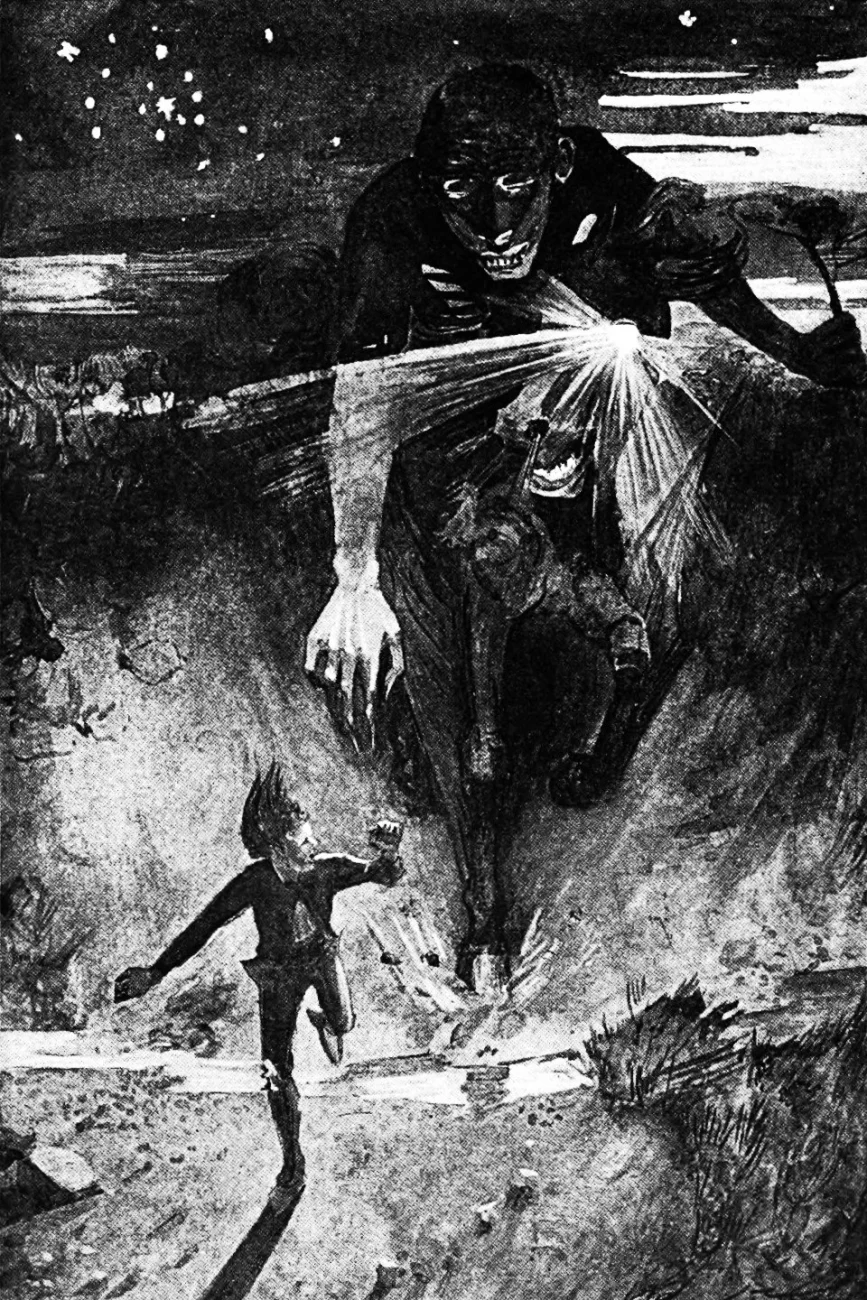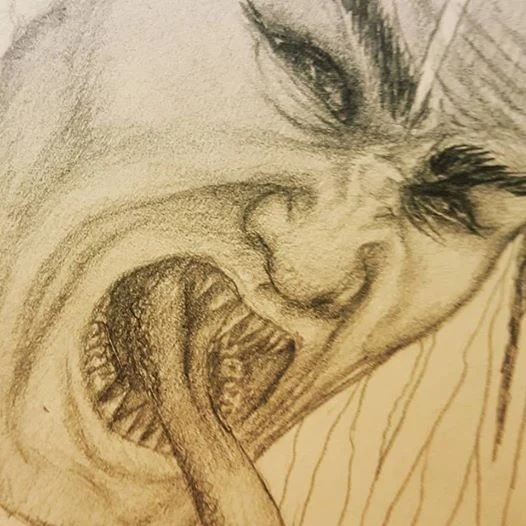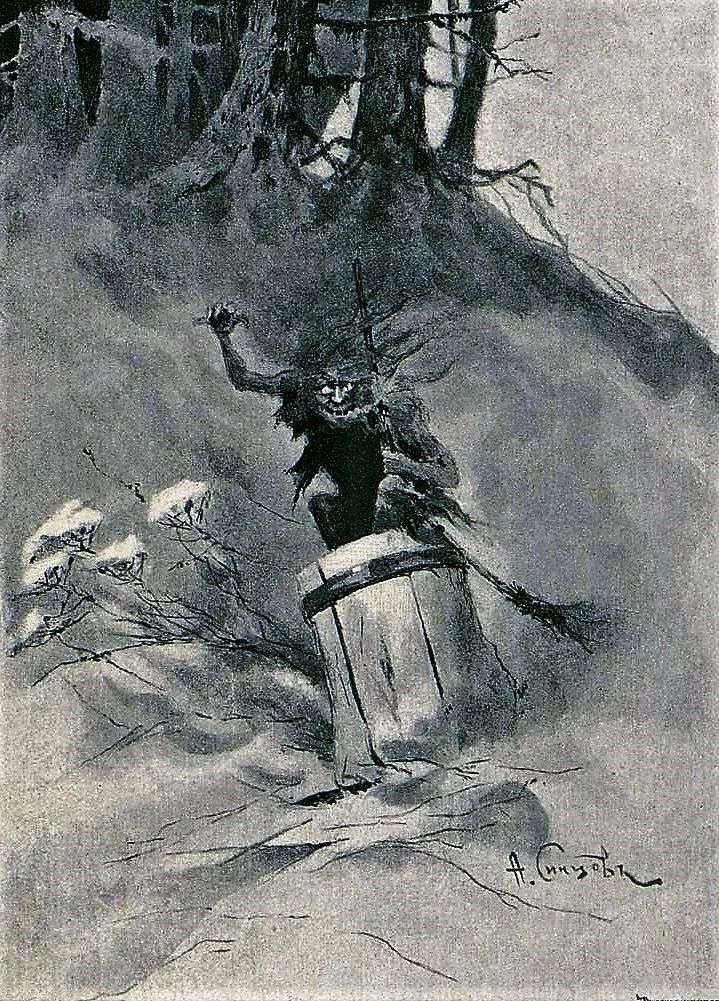
For centuries, cultures around the world have shared stories about frightening creatures that inhabit wild places – forests, rivers, and the skies. These tales weren’t just meant to scare people; they explained mysteries and warned against dangerous behavior. These monsters represent local customs, important life lessons, and historical events that still influence us today. From creatures that can change shape to spirits born from wrongdoing, their stories live on in celebrations, place names, and common expressions. Even now, these figures are kept alive through new stories and appearances in books, games, and television, continuing to capture our imaginations.
Wendigo

The Wendigo is a spirit from the traditional stories of Algonquian-speaking people in the northern forests. It’s often linked to the harshness of winter, times of famine, and an endless, overwhelming hunger. Stories usually depict the Wendigo as an evil presence that takes over people, causing them to commit cannibalism and violate important community rules. The legend serves as a strong warning against selfishness and uncontrolled desires, especially when communities must rely on each other to survive. Reports of the Wendigo and related stories are common in remote forests, helping to reinforce the importance of following rules for survival and showing respect for others.
Nuckelavee

As a total folklore buff, I’ve always been fascinated by the Nuckelavee, this terrifying creature from the Orkney Islands. Imagine a horse-like demon, but without skin, fused with the upper body of a rider – seriously creepy! It’s basically known for bringing bad luck, specifically disease and drought. The stories say its breath can kill crops and make animals sick, so it’s deeply tied to the fears of farmers. Interestingly, it apparently can’t cross freshwater streams, which gave people on the islands a way to escape it – lucky for them, the landscape is full of them! I think the legend probably grew out of real anxieties about harsh weather, failed harvests, and outbreaks of illness. It’s a really evocative myth.
Pontianak

In Malay and Indonesian legends, the Pontianak is a ghost said to be the spirit of a woman who died while pregnant or giving birth. She’s often described as a beautiful woman with long hair and a sweet smell that becomes unpleasant as she gets closer to her victims. Stories say she usually targets men, and people traditionally believe you can temporarily ward her off by driving nails into her body – a practice thought to make her seem more human. Encounters with the Pontianak are often said to happen at night in banana plantations or on lonely roads, highlighting the dangers of traveling alone.
Aswang

The Aswang is a general term in Filipino folklore for various terrifying creatures, including those that resemble ghouls, vampires, or werewolves. Different regions tell stories of Aswang with incredibly long tongues used to steal blood or organs, and some can even disguise themselves as ordinary people during the day. Traditionally, people protect themselves by using garlic, salt, or certain herbs around their homes, especially if a woman is pregnant. These stories serve as both warnings about danger and reminders of the importance of staying alert and working together as a community.
Penanggalan

The Penanggalan is a frightening figure from Malay and Indonesian folklore – a disembodied woman’s head that flies through the night. It’s said to hunt for the blood of mothers who have just given birth and their babies. Traditionally, people believed it entered homes through small openings, so they used things like woven mats and thorny bushes to try and keep it away. According to the stories, the head reattaches to its body during the day, and villagers sometimes tried to find and expose it by salting or concealing the body. This myth likely arose from anxieties surrounding childbirth, hygiene, and the dangers faced by new mothers.
Dullahan

As a film enthusiast, I’m fascinated by creatures from folklore, and the Dullahan is a particularly chilling one. He’s this headless horseman from Irish legends who actually carries his own head! And get this – he uses a human spine as a whip. Basically, if you hear him call your name, that’s it for you. What’s really creepy is that nothing can stop him – not even locked gates! He’s usually depicted riding a black horse, or sometimes a terrifying coach pulled by dark horses with flaming eyes. The whole legend feels like a really stark reminder that we all face our fate eventually, and it’s a truly haunting image.
La Llorona

As a movie buff who loves digging into the stories behind the stories, I’ve always been fascinated by La Llorona, ‘the Weeping Woman.’ She’s this incredibly haunting figure from Mexican and Latin American folklore – basically a ghost who wanders around rivers and lakes, forever mourning the children she lost. The legend goes that she tragically drowned them, sometimes because of hardship or just overwhelming sadness, and now she’s said to try and lure others to watery graves. It’s a tale parents tell their kids to keep them away from rivers at night, a scary story with a serious point. What’s cool is the legend gets retold every year, and changes slightly depending on where you are, but it always comes back to themes of grief, taking responsibility for your actions, and just being careful – not being reckless. It’s a really powerful story, and you can see why it’s stuck around for so long.
Baba Yaga

Baba Yaga is a powerful witch from Slavic folklore, known for her unusual home – a hut that walks on chicken legs! She travels in a mortar, steering with a pestle, and can be either helpful or dangerous. Most stories portray her as fierce, with sharp iron teeth, and she often tests those who cross her path, punishing rudeness or carelessness. Those who encounter her usually face tricky riddles, difficult tasks, or deals that require bravery and cleverness. Her tales teach important lessons about being polite, respecting your elders, and staying on the right path.
Jiangshi

In Chinese folklore, the Jiangshi is a type of undead creature, often called a “hopping vampire,” known for its stiff movements and ability to drain life energy from people. Stories say Taoist priests can ward them off or control them using special charms, bells, and objects made from peach wood. Traditionally, Jiangshi were thought to appear due to improper burial practices, disturbed environments, or restless spirits. This myth reflects important beliefs about respecting the dead, honoring family, and ensuring a peaceful transition for souls back to their ancestors.
Rakshasa

In the stories and ancient writings of South Asia, Rakshasas are often depicted as strong, magical creatures with the ability to change their shape. They’re known for being tricksters, sometimes eating people, and using magic to get what they want. These stories also tell of ways to protect oneself from them – through special chants, blessed weapons, and living a righteous life. Ultimately, the tales of Rakshasas emphasize the importance of being honest and disciplined as a defense against harm and wrongdoing.
Kumiho

In Korean folklore, the Kumiho is a mythical nine-tailed fox that can shapeshift into a human, frequently a beautiful woman, to trick people. Stories often depict it eating human livers or hearts, but some legends say it can become good if it practices virtue for many years. Older tales suggest that charms, wise elders, and strong social rules helped protect people from the Kumiho. Ultimately, the story of the Kumiho warns us to be wary of appearances and reminds us that changing oneself takes time and carries responsibility.
Jorōgumo

Jorōgumo is a spider demon from Japanese folklore known for transforming into a beautiful woman. She tricks travelers into remote locations, often near waterfalls or old houses, and traps them in her webs to eat. Stories often focus on musicians and lone wanderers, highlighting the risks of traveling alone. According to legend, traveling with others, paying attention to your surroundings, and being wary of unusually attractive people can help protect you from her.
Draugr

In Norse mythology, Draugr are powerful, undead creatures that guard burial mounds. They’re incredibly strong and often huge, and are known for a foul, decaying smell. Draugr protect the treasures buried with the dead and will attack anyone who tries to steal them. Some stories say they can even change shape or grow to enormous sizes. To stop a Draugr from coming back, heroes would often behead it, burn its body, or sink it at sea. These tales emphasize the importance of respecting graves and the danger of grave robbing.
Adze

In the folklore of the Ewe people of Ghana and Togo, the Adze is a creature believed to drain life from people, often appearing as a firefly to enter homes at night. When appearing as a person, it’s accused of causing sickness, unexplained weight loss, and problems within communities, particularly when people are jealous or have unresolved disagreements. People protect themselves through community watchfulness, the help of spiritual healers, and by keeping their homes and lives orderly. This belief connects bad luck to the overall well-being and moral behavior of the community.
Bunyip

In Australian Aboriginal traditions, the Bunyip is a fearsome creature said to live in rivers, swamps, and lagoons. Descriptions of its appearance differ depending on the area, but it’s always connected to the dangers of drowning and the importance of respecting sacred water sources. Stories often serve as warnings to children and travelers to stay away from certain waters, especially at night or during specific times of the year. The Bunyip legend reflects a deep cultural respect for waterways and the hidden dangers they can hold.
Share your favorite folklore terror—or the one from your region that we missed—in the comments!
Read More
- Bitcoin’s Ballet: Will the Bull Pirouette or Stumble? 💃🐂
- Deepfake Drama Alert: Crypto’s New Nemesis Is Your AI Twin! 🧠💸
- XRP’s Soul in Turmoil: A Frolic Through Doom & Gloom 😏📉
- ‘Jujutsu Kaisen’ Season 3 to Kick Off with Double Episode Premiere – Watch the Trailer
- 🚀 Doge’s Zero-Hour: Will It Go From Hero to Zero? 😱
- Dogecoin’s Big Yawn: Musk’s X Money Launch Leaves Market Unimpressed 🐕💸
- Swap Kraft Heinz for Costco: A Wodehousian Investment Tale 🍌
- Shift4 Payments Plummets 37% as Fund Trims Stake
- Can the Stock Market Defy Logic and Achieve a Third Consecutive 20% Gain?
- H World Group’s 49% Surge: A Fund’s Petty Victory
2025-10-23 17:16